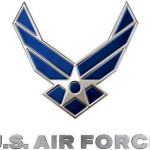- Industry: Military
- Number of terms: 1214
- Number of blossaries: 0
- Company Profile:
The United States Air Force (USAF) is the aerial warfare branch of the United States Armed Forces which was created under the National Security Act of 1947 signed President Harry S Truman. The Air Force ended a 40-year association with the U.S. Army to become a separate service two years after the ...
The necessary action to ensure adequate exchange of information to integrate, synchronize, and deconflict operations between separate organizations. Coordination is not necessarily a process of gaining approval but is most often used for mutual exchange of information. Normally used between functions of a supporting staff. Direct liaison authorized (DIRLAUTH) is used to coordinate with an organization outside of the immediate staff or organization.
Industry:Military
The basic areas of expertise or the specialties that the Air Force brings to any activity across the spectrum of military operations whether as a single Service or in conjunction with the core competencies of other Services in joint operations. Core competencies represent both air and space power application theory and physical capability represented in a well-trained and equipped air force.
Industry:Military
A task adapted from the Air Force core competencies or their command and control.
Industry:Military
The Air Force core values are values for service, values for life, and must be reflected in everything that we do. Those core values are integrity first, service before self, excellence in all we do.
Industry:Military
Movements of air assets, usually fighter aircraft, in support of contingencies, rotations, exercises, or aircraft movements for logistics purposes.
Industry:Military
A mission that integrates offensive and defensive operations to attain and maintain a desired degree of air superiority. Counterair missions are designed to destroy or negate enemy aircraft and missiles, both before and after launch. Counterair integrates and exploits the mutually beneficial effects of offensive and defensive operations by fixed- and rotary-wing aircraft, surface-to-air and air-to-air missiles, antiaircraft guns, artillery, and electronic warfare to destroy or neutralize enemy aircraft and missile forces both before and after launch.
Industry:Military
Operations conducted to attain and maintain a desired degree of superiority over surface operations by the destruction, disrupting, delaying, diverting, or other neutralization of enemy forces. The main objectives of counterland operations are to dominate the surface environment and prevent the opponent from doing the same.
Industry:Military
Counterproliferation refers to the activities of the full range of US efforts to combat proliferation, including diplomacy, arms control, export controls, and intelligence collection and analyses, with particular responsibility for assuring that US forces and interests can be protected should they confront an adversary armed with weapons of mass destruction or missiles.
Industry:Military
Those psychological operations activities that identify adversary propaganda, contribute to situational awareness, and serve to expose adversary attempts to influence friendly populations and military forces. Activities to identify and counter adversary propaganda and expose adversary attempts to influence friendly populations and military forces situational understanding.
Industry:Military
Operations conducted to attain and maintain a desired degree of superiority over maritime operations by the destruction, disrupting, delaying, diverting, or other neutralization of enemy naval forces. The main objectives of countersea operations are to dominate the maritime environment and prevent the opponent from doing the same.
Industry:Military
